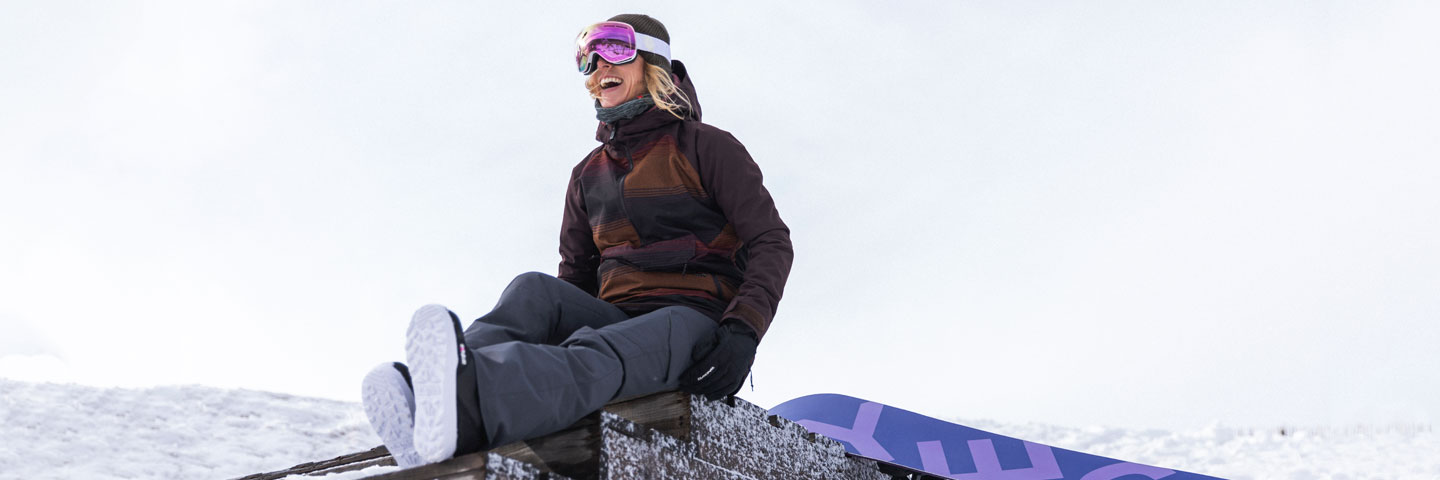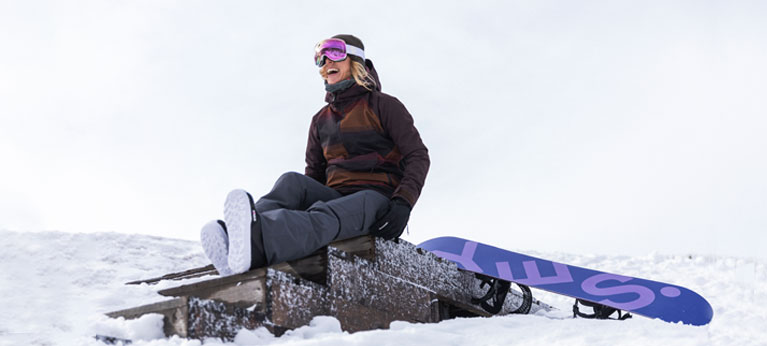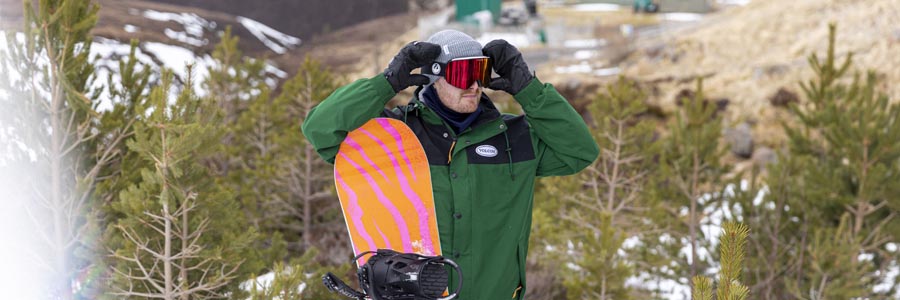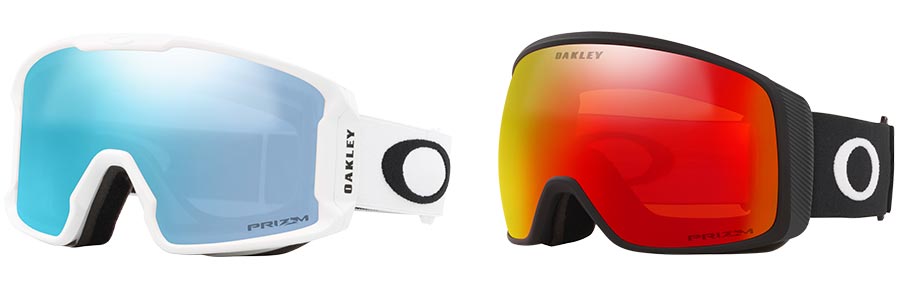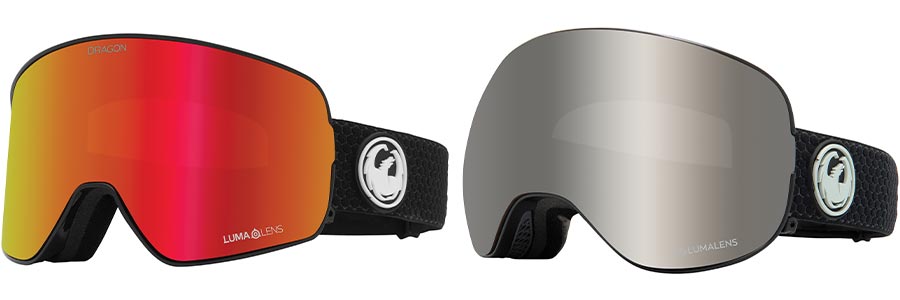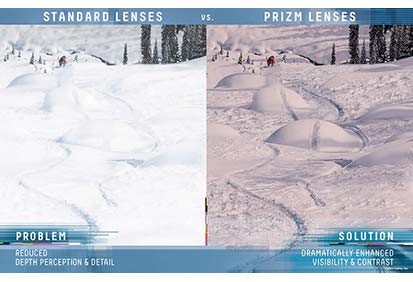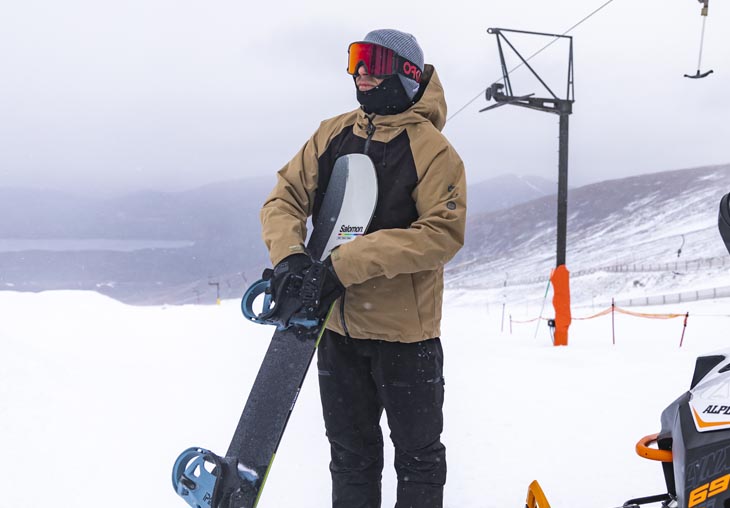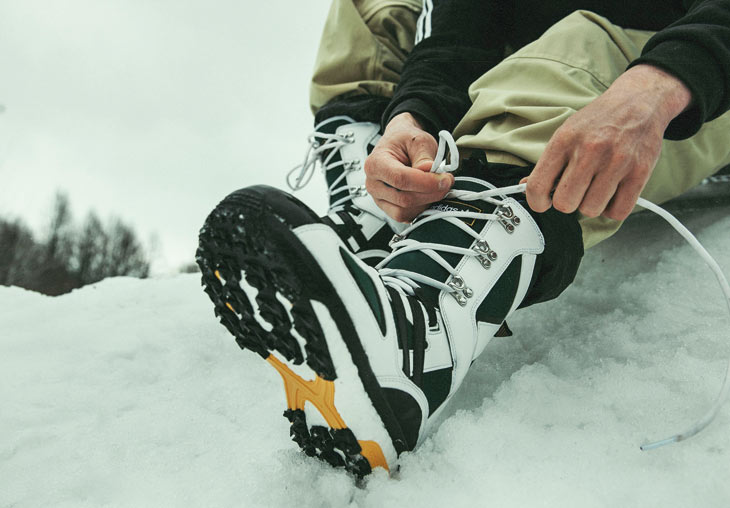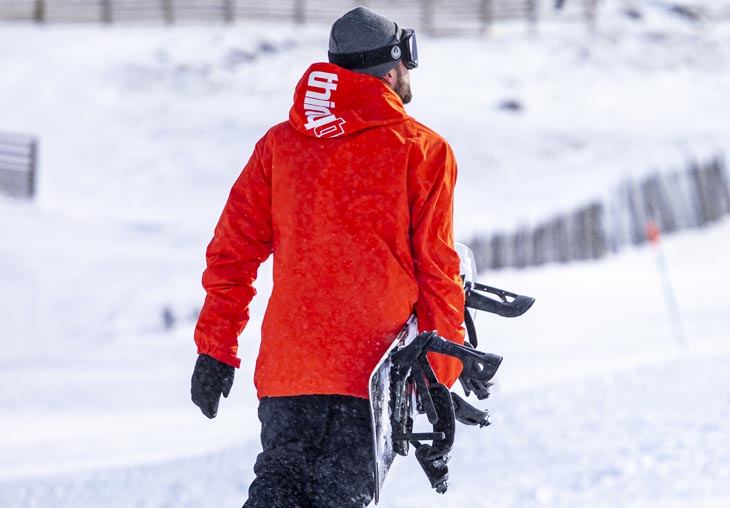Snowboard Goggles Buying Guide
Why Wear Snowboard Goggles?
In the mountains the weather can be unpredictable and challenging. When the sun comes out the brightness is amplified due to altitude; the higher you go the stronger the Ultra Violet (UV) light. If you're snowboarding at a very high altitude, glaciers for example, it's even more important to protect your eyes effectively. The sunlight also reflects off the snow, intensifying the light.
If the weather is cloudy, overcast or snowing you are unlikely to be able to see too much, meaning your eyes will need assistance to keep you safe on the hill. Glasses won't prevent the snow from entering around the frames making it a lot harder to navigate around the mountain. Most sunglasses are also designed to work best in bright sunny conditions, rather than in snow, wind and cloud.
A good pair of goggles will help to protect your eyes, prevent snow getting in, help increase contrast in a storm and also help reduce any damage caused by the sun.
All our goggles, no matter what brand, offer full protection from UVA and UVB light. UVA is lower energy light but penetrates more deeply than UVB. UVB is stronger and is the light which causes most damage to the eyes. UVC light is completely absorbed by the ozone layer and earth's atmosphere.
Even though UV light is reduced in cloudy conditions it is not blocked out completely. One thing you need to be careful of is a condition referred to as snow blindness (photokeratitis). It's a painful condition that is caused by exposure to harmful rays which are often enhanced by the reflection off the snow, basically a form of sunburn on to the eye. Like a sunburn it's often not noticed until a while later when it is too late with symptoms such as painful eyes and increased tears. There is more risk of this condition at high altitude with more intense UV light.
There are many different goggle shapes and designs to fit a range of faces. A good fitting goggle will allow for a greater field of vision, including sideways, and a neat seal around the face. With a high proportion of snowboarders using helmets, you also need to take this into consideration when buying goggles.
If you already own a helmet then make sure your goggles fit with them, or if buying both, then try them on together. Again, the seal should be good around the face and nose, and you want a good fit around the top of the goggle where it meets the helmet. If there is too much gap it can cause a air to get through making it very cold and uncomfortable, or even lead to a very embarrassing sun tan.
- Women's specific fit goggles often have less volume over the bridge of the nose to reduce excess space for snow and wind to enter. The frame will also be a little smaller than a standard sized adult goggle.
- Children's goggles are less bulky and fit closer to the face. They are usually simplified to reduce the cost and keep them robust.
- O.T.G (Over The Glasses) are designed for people who wear glasses and will be a bit deeper allowing more space in front of the eyes to prevent glasses being pushed onto the face. They will have a cut away at the side of the frame so the arms can fit under the foam, and plenty of venting to reduce glasses steaming up.
- Oversized goggles, appearing to be frameless in some cases, have also grown in popularity. They give exceptional peripheral vision for greater awareness on the slope, and come in both female and unisex fits.
Lens Shapes & Technology
There are two basic types of lens shape. The traditional style that appears ‘flat' is a cylindrical lens. It is generally curved around its vertical axis. Modern technologies have allowed lenses to be shaped to both vertically and horizontally (along both vertical and horizontal axis) creating a spherical lens. The spherical lens produces better optical clarity as the theory is it is shaped like the human eye so will allow for less distortion and therefore a better field of view.
Cylindrical Lens
Spherical Lens
All but our very basic junior goggles use a double layered lens. It is made up of two separate lenses with a rubber or silicone seal to separate them. The double layer acts like double glazing in a house, trapping heat and reducing the goggle fogging up, especially when combined with an anti-fog treatment.
A good lens will be injection moulded or fused into shape rather than being a flat piece of material flexed around the frame. A poor quality lens will feel flimsy and distort under stress, affecting vision for the user. They are often only a single lens with too little/no anti-fog treatment or any protection from the sun.
Speciality Lenses
Several goggle brands have been developing their own speciality lenses in recent years to give snowsports users increased protection and better vision in the conditions they are likely to face in the mountains.
Oakley led the way with their Prizm lenses which have been engineered to enhance visibility and contrast. It works over a wider range of light conditions than traditional lenses, making it more versatile. Prizm works by splitting light into all its different colour spectrums then enhancing those needed to see in these conditions and filtering out the others. The wearer is left with enhanced vision and crisp detailing.
Similarly Dragon have introduced their Lumalens technology and Smith have ChromaPop, which both work to enhance visibility and provide greater depth perception whilst skiing and snowboarding.
Dual / Bonus Lenses
Certain goggles come with two lenses as part of a package, which allows the user to tune their goggles depending on conditions. One lens is normally best suited for when it's bright and the other for flat light and darker conditions. Changing them is quite easy after a little practice.
Lens Tints & Conditions
There are many different tints of lenses available and they are suited to different conditions, from high altitude very bright light, all the way through to very dull and snowy days. Lenses are categorised from 0 to 4 - the higher the number, the darker the lens will generally be. 0 is suited for night conditions and not usually used much in snowsports. An all-round lens for variable conditions will be in category 2-3. Category 4 lenses are for the very brightest of conditions and very high altitudes, they aren't usually required for skiing and snowboarding but can be used on bright days.
Most brands also provide a visual light transmission (VLT) rating that shows how much light can pass through the lens. The higher the number the more light can pass through. So for sunny and bright conditions you would want a lower VLT as less light can pass through, and when it's snowing or the light is flat, a lens which allows more light to pass through is more favourable. It’s worth noting that although VLT ratings sit within categories, they can vary quite a lot from one lens to another in terms of the percentage of light they let through. VLT is a more accurate way to compare how much light can penetrate different lenses.
- Very bright & sunny conditions
Lens to use: Category 3-4 (8-18% and 3-8% VLT)
The lens will be quite dark to look through (in most cases) and block out a lot of light. - Bright conditions
Lens to use: Category 3 (8-18% VLT)
These give great bright weather protection and some definition, often quite versatile.
- Variable conditions
Lens to use: Category 2-3 (18-43% and 8-18% VLT)
These lenses are suitable for most light conditions except the very brightest and very dull days. The base lens tint will usually be an orange or brown, offering the definition needs in low light, but they will have a coating or be infused with a slightly darker colour to give bright light protection. They are very versatile and the most popular lens. - Low light & snow conditions
Lens to use: Category 1-2 (43-80% and 18-43% VLT)
Traditionally these would be the most commonly seen lenses on the mountain. However, whilst people do wear them when the sun is out we wouldn't recommend it as they actively enhance light, and this can make it harder to see.
Maintenance & Care
- When in use, only clean the lenses with the bag the goggles are sold with. This is a special fabric designed to do this job. Tissues, cotton, sleeves etc are highly abrasive and will scratch the lens with use.
- Only clean the lens when it is dry. If you take a fall and the goggle fills with snow, let the goggle dry out, then clean it even if it means snowboarding with a bit of snow inside.
- Do not put the goggles down on the lenses, this will damage them.
- Try not to wear them on your head. Your head is like a funnel and pumps out heat - fogging the lens.

